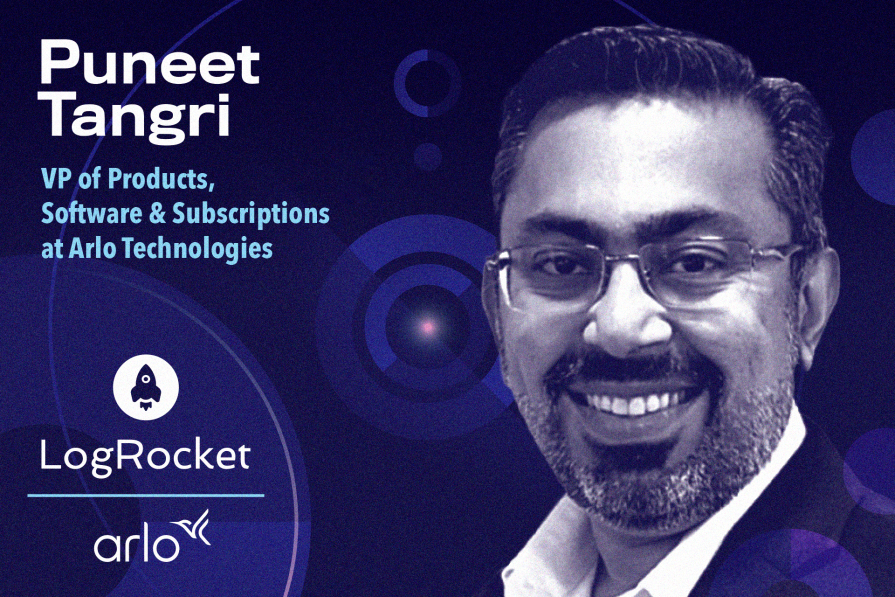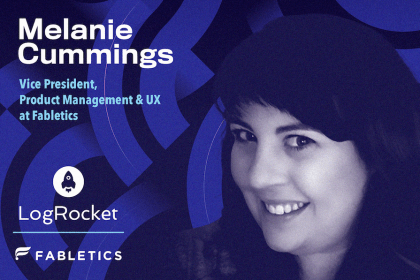Puneet Tangri is VP of Products, Software & Subscriptions at Arlo Technologies, a market leader in smart home IoT technology. Puneet led Arlo’s subscription strategy and the redesign of their mobile experience, resulting in 8x business growth to almost 2.5 million subscribers. Before joining Arlo, Puneet worked at notable technology companies such as Intel and McAfee.

In our conversation, Puneet talks about the two product groups or functions that you always need in the technology world: innovation catalysts (the value creators) and growth PMs who focus on product-led growth strategies. He also discusses his experience creating processes from scratch and highlights his philosophy that it’s not the team that brings the process together, but the process that brings the team together.
I’m a product leader and I’ve been in product for more than 15 years, specifically focused on subscription and software products. I’ve worked on zero-to-one product launches as well as the transformation of products. My current role at Arlo is focused on software and subscription leadership. Within Arlo, there are two product groups: one that builds the hardware devices and another, my role, which spans across all of the software and subscriptions thereafter.
My first big transformation initiative was when I was at RealNetworks. We took our RealPlayer product, which is a desktop-based video player, and transformed it into a cloud-based, multi-device product supported by a subscription-based business model.
I’m an engineer turned product guy. Early in my career, I was still in subscriptions on the engineering side — specifically working on how to run subscriptions from a technology standpoint.
What I was really curious about is why are we doing this and what exactly needs to be done. I think that’s where my transformation started — questioning why and how this matters to the customer. So I like to get that big picture. Engineering is sort of my core already, and I love working with technology folks. Product brings me into that centerpiece where I can work with everybody around me and actually drive company objectives forward.
Product management is really the backbone of the organization. A PM’s job is to align the business and corporate strategy with customer needs, and then work across the board on a roadmap that will bring that to fruition. The first thing we have to do is ensure that the people that we are hiring can understand this and balance those needs.
I always focus on making sure that the PMs we hire have a little bit of withholding power — the ability to not be pushed in a certain direction. We have to constantly evolve our teams based on our business and our corporate and innovation goals sometimes, so I look at how my team is aligned toward where the company needs to go and what our roadmap is. And, if you are a real innovator in the industry, that changes every year. It doesn’t mean changing everything, but, I end up making certain changes to align the team structure and team building towards the goal for the next year.
In terms of team structure, there are two product groups or functions that you always need in the technology world. One is the value creators — the products and features that are creating more value for the end customers. The second is product-led growth. Specifically, product-led growth is focused on features that matter to customers and drive business growth. It makes sure that as many customers as possible activate those key features because that’s what is going to drive your business.
PMs that are focused on creating more value are building features for the customer based on hypothesis. We look at competition and internal data and survey existing customers. We do market research via focus groups and bring customers inside to understand what they really value. We use the insights from customer activities and the education we continue to provide the customer.
In tandem with pillars like the cost to build and time to ship, all of those elements come in where you prioritize your value creators. The growth team that we build around product-led growth takes the hypothesis and validates and iterates on it. It’s a learning process.
We also think about the really big swings and the new initiatives we want to do. In this case, I would say the risk could be higher, and it just needs its own full focus. What are those new things that we are going to do?
As an example, at Arlo, we are focused on bringing security to the customer at home. This is what our camera line and other products did, and we launched a new initiative to expand our business into the personal safety space.
You think about these big swings you’re going to take in the business, and you usually want a different mindset for that because the value creators are focused on enhancements and growth is very data-driven. The new initiative team is usually a big swing team that thinks outside of the box. You don’t know that everything is going to be perfect, but you have an intuition and some backing data that this is what we’re going to try. It’s a bigger experiment in some ways, and it needs a different kind of mindset.
What I say is usually, it’s the team that brings the process together, not the process that brings the team together. The first thing is, how do you make sure that the team comes together? Coming into a new role, you have to understand where the team stands today — the team and the dynamics. At the same time, when there’s a lack of process, you have to start with your OKRs or the key metrics, and then identify what we’re going to get behind. The team begins aligning behind the metrics and that starts to create accountability.
You go from a process of execution to an accountability matrix where you start thinking about who’s driving which OKR. The next thing that I like to do is take these OKRs and break them down to start creating and working with teams externally. Each of the product people are going to collaborate with external team members to create squads, and then those squads become accountable for the OKR momentum.
For projects that are on a scale where you need executive approval, for example, you have to be able to focus. I follow a process internally and I call it the Super Six. We have a meeting on the calendar every week, and its title is Software and Subscriptions Super Six. We have so many things going on and each product manager has a roadmap with 10–20 things on it, let’s say.
I divide the team from a process standpoint into the squads where they can focus on those. Then, with some of my counterparts on the leadership side, we look at only the top six, aka the “Super Six.” Because if you’re going beyond that, then you’re going to be too much in the weeds. You start taking away the authority you originally gave to your teams.
With buy-in, you ultimately have to do your homework. You should know about your business, what the goals are, and your customers, and make sure you fully understand your competitive landscape. How is innovation coming into play here? What is your cost to build and when can you deliver?
You need to first work with each of these teams separately and then you bring them all together to ensure that you can pitch to the stakeholders. It’s not one person’s belief, it’s a team’s belief, and the team has done their homework.
There are two things that are generic in nature: people have no time and no patience, so you have to keep it simple, and you have to be phenomenal when it comes to performance. For instance, think about a camera that somebody is purchasing for a security system in their home. If they’re not home and you send them a notification that someone is at the door after 45 seconds, that’s too late.
There’s a third thing that overarches too, which is that no matter what you do in terms of simplicity and performance, it’s a software world and it’s never bug-free. You’re going to have bugs, you’re going to have issues, so you have to have a phenomenal customer support team and a process — not just by phone, but also chat, community, FAQs, a knowledge base, etc. You need that 360-degree support to catch anything that you were unable to fulfill in that initial customer experience.
I think it’s going to be much more challenging to be a product manager as I look ahead. For good or bad, there has been so much innovation in tech that customers now expect to be surprised and delighted.
For example, if you buy a new EV car nowadays and you’re standing at a light, it turns green and your car makes a quick noise to tell you that it’s time to go. These are small enhancements that are shifting customer expectations altogether.
The thing for product managers to keep in mind is they have to learn faster than ever before. See how AI/ML can improve customer experience without compromising security, they have to constantly think outside the box. Consumers are expecting companies to always innovate. Most of all, because it’s happening so fast, they have to focus on delivery as well. Because if you are thinking about it, someone else is already building it.
LogRocket identifies friction points in the user experience so you can make informed decisions about product and design changes that must happen to hit your goals.
With LogRocket, you can understand the scope of the issues affecting your product and prioritize the changes that need to be made. LogRocket simplifies workflows by allowing Engineering, Product, UX, and Design teams to work from the same data as you, eliminating any confusion about what needs to be done.
Get your teams on the same page — try LogRocket today.
Want to get sent new PM Leadership Spotlights when they come out?

The continuous improvement process (CIP) provides a structured approach to delivering incremental product enhancements.

As a PM, you’re responsible for functional requirements and it’s vital that you don’t confuse them with other requirements.

Melani Cummings, VP of Product and UX at Fabletics, talks about the nuances of omnichannel strategy in a membership-based company.

Monitoring customer experience KPIs helps companies understand customer satisfaction, loyalty, and the overall experience.